Most electric chainsaws operate between 8 to 15 amps, which translates to a running wattage of 960W to 1800W at 120V. However, since power tools often require a surge wattage during startup, it is recommended to use a generator with at least 2000W capacity to ensure stable and uninterrupted operation. As you can see, wondering what size generator to run an electric chainsaw is a fair question because if you use a smaller chainsaw that operates under 1000W, a 1000W generator might be sufficient, but any tool that exceeds this power rating would require a larger backup.
Electric chainsaws are commonly used mostly on outdoor setups or at construction sites, where direct power supply may not be available. If you also plan to use an electric chainsaw at outdoor locations, you can always rely on Jackery Solar Generators. Unlike gas generators, these solar-powered generators provide a clean energy backup so you can cut cords in environmentally sensitive areas.
Key Takeaways
- A 1500W electric chainsaw with its startup surge reaching 3000W would require a generator that can easily prevent overloads or failures.
- Gasoline generators are powerful but noisy and require fuel refills. Whereas, inverter generators offer stable power but struggle with high-surge tools.
- A 3000W chainsaw running for two hours requires a significant amount of stored energy, which means that those using battery-powered solutions must account for battery capacity and charging options.
- A 3500-watt generator can handle most power tools, but you may need to find a battery pack if you want to use high-surge tools like table saws or compressors that might overload it.
How Many Watts Does an Electric Chainsaw Use?
An electric chainsaw typically consumes between 1500W and 2600W. However, the wattage size depends upon the model and its power rating. The wattage requirement is determined by the electric chainsaw’s motor’s amperage and the voltage it operates on. For instance, standard electric chainsaws run at 120V and draw around 12 amps, which equates to approximately 1440W.
However, larger professional-grade chainsaws can demand significantly more power. Some high-performance models operate at 15 to 20 amps, which subsequently increases their wattage requirement to 1800W - 2600W. These are typically used for heavy-duty logging, cutting thick hardwood, or intensive construction tasks. Given the fluctuating power needs during startup, chainsaws may also experience momentary surge wattage, requiring an even higher capacity from a generator or power source.
How Many Starting & Running Watts Electric Chainsaw Uses?
Like most power tools, electric chainsaws experience a surge in wattage during startup, commonly known as a surge wattage. This sudden spike happens because electric chainsaws have motors in them that require extra power to overcome initial resistance when they first get power. The chainsaw's components, such as motor windings and cutting chains, require energy to transition from stationary to full-speed operation.
While evaluating what size generator to run an electric chainsaw, we always consider that the surge wattage is 1.5 to 2.5 times higher than the chainsaw’s running wattage. Consider a generic electric chainsaw that operates at 1200W during normal use. For instance, if you have a standard 1200W electric chainsaw, then the surge wattage can be calculated as:
Surge Wattage = Running Wattage x 2.0 = 1200W x 2.0 = 2,400W
How Much Energy is Needed to Run an Electric Chainsaw?
The energy requirement to run a power tool would help you determine what size generator is needed to run an electric chainsaw. The amount of energy required depends on key parameters that vary as per model and brand. To calculate energy consumption, you can use the following standard formula:
Energy (kWh) = [Power (W) x Time (Hours)]/1000
Let’s take an electric chainsaw with a power rating of 3000W (or 3kW) and assume it is used for 2 hours straight during a wood-cutting session. Then, the energy needed would be:
Energy = [3000W x 2H]/1000 = 6kWh
Types of Generators for Electric Chainsaw
Before you find out what size generator you need to run an electric chainsaw, you will also need to understand which type of generator is ideal for you and your work. When you choose the right generator for an electric chainsaw, you ensure that it receives a consistent power supply, has mobility, and requires efficiency. Here are a few notable types of generators that people often use to run their electric chainsaws:
Gasoline Generator for Electric Chainsaw
A gasoline generator is a fuel-powered device that converts mechanical energy into electricity. Gasoline-based generators are commonly used at construction sites, outdoor work, and remote areas where grid power is unavailable.
Pros:
- It can easily support a heavy-duty electric chainsaw
- It does not depend on sunlight or the grid for any connectivity.
Cons:
- Diesel-based generators produce significant noise.
- These are not eco-friendly as they emit harmful gases.
Inverter Generator for Electric Chainsaw
An inverter generator is a more advanced version of a standard generator as it produces cleaner and more stable power with variable engine speed for better efficiency.
Pros:
- It prevents power fluctuations that could damage the electric chainsaw or sensitive electronics.
- You can easily adjust power generation based on load, which reduces fuel consumption.
Cons:
- It may struggle with large electric chainsaws that would require high surge wattage.
- These are more expensive than conventional generators.
Standby Generator for Electric Chainsaw
A standby generator is a permanently installed backup power source that automatically starts during a power outage.
Pros:
- It ensures continuous operation during outages.
- It can handle multiple power tools, including heavy-duty chainsaws and drilling machines.
Cons:
- These are non-portable generators, which limits their usage in construction sites.
- There’s a high upfront cost and installation charges.
Solar Generator for Electric Chainsaw
A solar generator is a battery-based power system that harnesses energy from the sun to generate electricity.
Pros:
- Solar-based generators emit no noise, fumes, or even pollution while operating.
- These are ideal for remote work where gas refueling is not an option.
Cons:
- Solar system installation requires a higher upfront investment,
- Solar-based generators depend on the Sun to generate electricity.
What Size of Generator to Run an Electric Chainsaw?
In order to run an electric chainsaw effectively, you would require a generator that can supply both running and surge wattages. At the very same time, the finalized generator should fulfill other requirements as well, including that of a cost. Here’s a step-by-step guide for you to understand what size generator to run electric chainsaws:
Step 1: Find the Running Wattage
The first step in order to understand what size of generator is needed to run an electric chainsaw is to understand the running wattage of it. As stated above, the running wattage is the amount of power it consumes during continuous operation. This information is usually found on the manufacturer’s label or product manual.
Let’s consider that you have a 1500W electric chainsaw that operates at 120V and 12.5A, then:
Power (W) = Voltage (V) x Current (A)
1500W = 120V x 12.5A
Step 2: Determine the Surge Wattage
The surge wattage of the electric chainsaw can be calculated by considering that there will be a 1.5 to 2.5x sudden spike in the running wattage. For the 1500W chainsaw, it would be:
Surge Wattage = Running Wattage x 2.0 = 1500W x 2.0 = 3,000W
This means that the finalized generator must provide 3000W to power the chainsaw’s startup sequences.
Step 3: Add a Safety Buffer
In order to prevent the generator from operating at maximum load, it is recommended to always add a 20-30% safety buffer.
Recommended Wattage = Running Wattage x 1.2 = 1500 x 1.2 = 1,800W
If you choose a generator with at least 2,000W-rated output and 3,600W surge output, you ensure that it can handle the surge wattage and prevent overloads.
Step 4: Account for Additional Load
If you intend to use other appliances, like work lights (50W), portable fan (50W), and phone charger (15W) alongside your electric chainsaw, then:
Total Additional Running Wattage = 50W + 50W + 15W = 115W
Total Running Wattage = 1,800W + 115W = 1915W
This means that in order to run a 1800W electric chainsaw along with a few small appliances, you will require a generator of at least 2,000W.
Note: If the other appliances also have a surge, kindly consider the one with the highest surge while calculating the required size of the generator to run an electric chainsaw.
How to Calculate Cost Per Hour Usage of Electric Chainsaw
There are several different ways to power your electric chainsaw. You can either use an on-grid power supply or, if you are in outdoor settings, you can use a backup solution. However, the usage of an electric chainsaw also depends on the cost per hour that you need to bear.
Here’s an estimated breakdown of the cost per hour that you need to pay for using an electric chainsaw. In order to fully understand the calculator, you will need to consider the cost of diesel and the electricity rate as per the EIA.
EIA reported that the diesel cost in February 2025 was $3.68 per gallon. Similarly, the average electricity rate in the US in the same period was ¢16.26kWh. Here, we are also considering how a 10kW diesel generator at 50% load consumes 0.53 gallons per hour.
|
Types of Chainsaw |
Usage Duration |
Chainsaw Wattage |
Energy Used |
Grid Cost |
Diesel Cost |
Solar Generator Cost |
|
Light-Duty Electric Chainsaw |
15mins |
1500W |
0.37kWh |
$0.06 |
$0.14 |
$0.00 |
|
Light-Duty Electric Chainsaw |
30mins |
1500W |
0.75kWh |
$0.12 |
$0.29 |
$0.00 |
|
Medium-Duty Electric Chainsaw |
15mins |
2200W |
0.55kWh |
$0.08 |
$0.21 |
$0.00 |
|
Medium-Duty Electric Chainsaw |
30mins |
2200W |
1.10kWh |
$0.17 |
$0.43 |
$0.00 |
|
Battery-Powered Chainsaws |
15mins |
1000W |
0.25kWh |
$0.04 |
$0.10 |
$0.00 |
|
Battery-Powered Chainsaws |
30mins |
1000W |
0.50kWh |
$0.08 |
$0.20 |
$0.00 |
The cost of using a light-duty electric chainsaw for 30 minutes with a diesel generator comes close to $0.29, which adds up to $8.70 monthly and $104.40 annually. Solar-powered generators involve only initial investment, no hourly cost, are fume-free, and convenient to use anywhere.
Jackery Solar Generator to Run Electric Chainsaw
Jackery is a leading brand for solar generators, solar panels, and portable power stations. Its solar-powered generators' compact and ergonomic design ensures you can power electric chainsaws and other high-wattage appliances at home and outdoors.
Here are a few recommended solar generators to run electric chainsaws:
Jackery Solar Generator 5000 Plus
Jackery Solar Generator 5000 Plus is a powerful solar generator that lets you power a 3000W electric chainsaw for close to 1.4 hours. When you are at the construction site and looking to power multiple appliances, you can always rely on Jackery Solar Generator 5000 Plus. With large battery capacity and portability, this best-selling solar-powered generator from Jackery is ideal for emergency backup solutions at home and outdoor activities.
Appliance Working Hours
- Electric Chainsaw (3000W): 1.40H
- Electric Chainsaw (2200W): 1.90H
- Electric Chainsaw (1500W): 2.76H
- Angle Grinder (2200W): 1.90H
- Bench Grinder (1000W): 4.1H

Customer Review
“This is a great product. I am very satisfied. The smartphone app is very useful for monitoring and setting values in the system.” -- Gary.
Jackery Solar Generator 2000 Plus
The Jackery Solar Generator 2000 Plus is yet another solar-powered generator designed to provide reliable energy solutions for various scenarios. Its user-friendly design ensures effortless operation, which makes it ideal for both seasoned adventurers and those new to portable power. The Jackery Solar Generator 2000 Plus offers multiple charging options, which lets you keep essential devices powered during outdoor excursions, emergency situations, or everyday use.
Appliance Working Hours
- Electric Chainsaw (1500W): 1.10H
- Circular Saw (1200W): 1.4H
- Drill Machine (1000W): 1.70H
- Refrigerator (900W): 1.9H
- Jigsaw Machine (800W): 2.10H

Customer Review
“Charged it up to 100% really quickly and a couple of weeks later tested it by letting it run my full-size fridge. Ran it with no problem all day & half the night for about 16 hrs.” -- Steve Dunn.
What Size Generator Needed to Run Electric Chainsaw FAQs
Can a 3500-watt generator run power tools?
Yes, a 3500-watt generator can run most common power tools, but the exact tools it can handle depend on their running and surge wattage. Many standard circular saws, drills, grinders, and smaller air compressors operate well within this range, as they typically require between 1000W and 2500W.
Will a 2000-watt generator run a circular saw?
A 2000-watt generator may be able to run a circular saw, but it depends on the saw's power rating and surge wattage. Most corded circular saws operate between 1200W and 1800W, but they require a surge wattage of 1.5x to 2.5x their running power during startup. However, if the saw has soft-start technology or lower peak surge demands, it may work efficiently.
Do generators damage power tools?
No, generally, generators do not damage tools, but issues might arise if they do not supply clean, stable power or if their wattage is insufficient for the tool's requirements. Traditional gasoline or diesel generators can experience voltage fluctuations, which may lead to overheating, irregular motor performance, or long-term damage to tools with delicate electronics, such as variable-speed drills, laser-guided saws, and digital displays.
Is it possible to run a 2200W circular saw with a 2.4kVA generator?
A 2.4kVA generator can theoretically provide 2400W of apparent power, but the actual usable power depends on its power factor, typically 0.8 for most generators. This means the real power output would be close to 1,920W. Since a 2200W circular saw requires more power than this generator can continuously supply, it may not run efficiently. To safely run a 2200W circular saw, a generator rated at least 3000-3500W would be a better choice.
How long will a battery-powered chainsaw run?
The runtime of a battery-powered chainsaw depends on battery capacity, power consumption, and load conditions. For example, a 60V, 5Ah battery holds 300Wh of energy. If the chainsaw consumes 1000W under load, the estimated runtime is close to 0.3 hours (or 18 minutes).
Conclusion
Evaluating the cost of the generator is one of the important things when you wish to understand what size generator is needed to run electric chainsaws. The size of the generator depends on the electric chainsaw’s running and surge wattage, the buffer time you consider, and whether or not you are using additional appliances alongside it. If you are traveling to the outdoor construction site and wish to carry your chainsaw with you, consider using a Jackery Solar Generator. The portability and noise-free action make the Jackery Solar Generator an ideal companion during extended power outages or to use at outdoor locations.
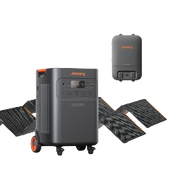
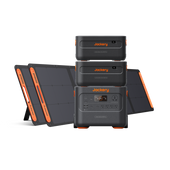
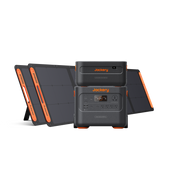
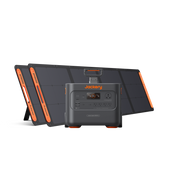

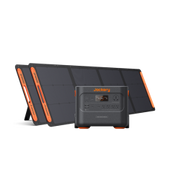
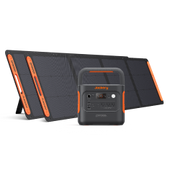

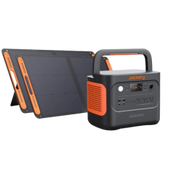
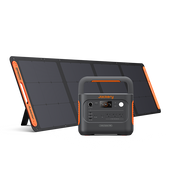
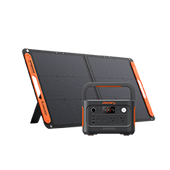

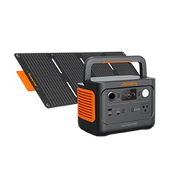

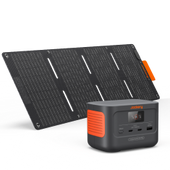
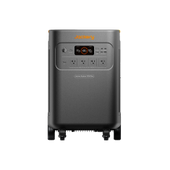

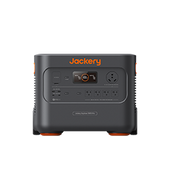
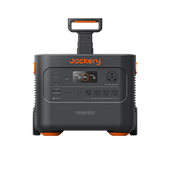
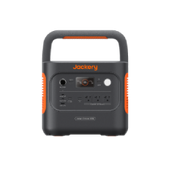
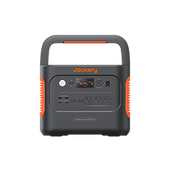

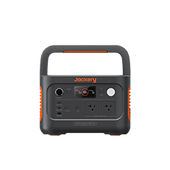
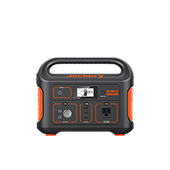
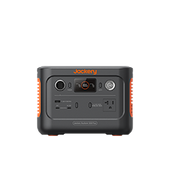

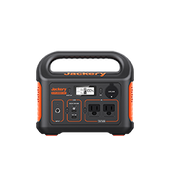
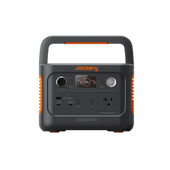
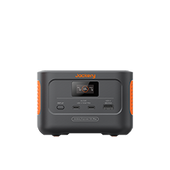



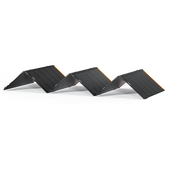
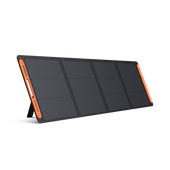
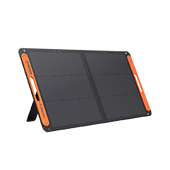
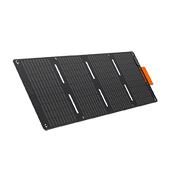

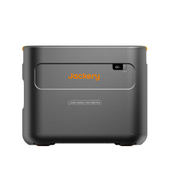



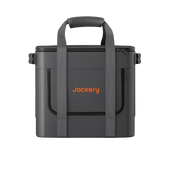
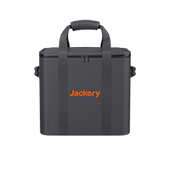
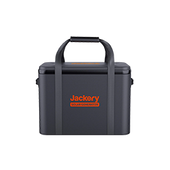

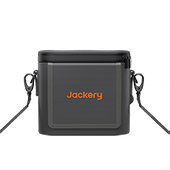
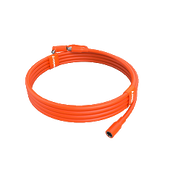

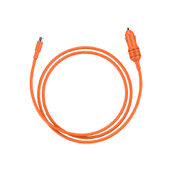

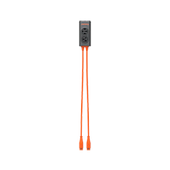
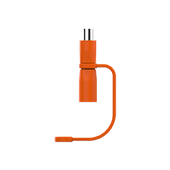
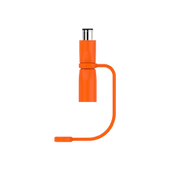


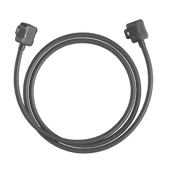

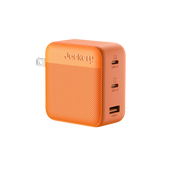




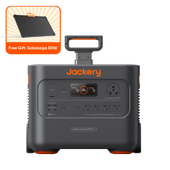
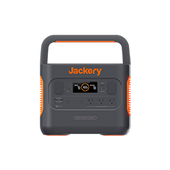
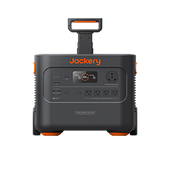
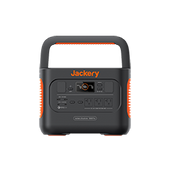
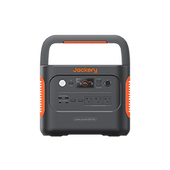
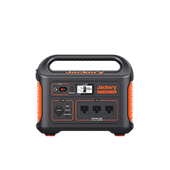
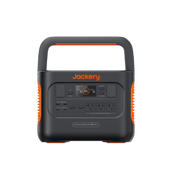
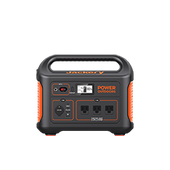
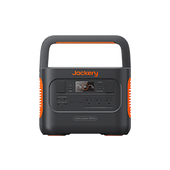
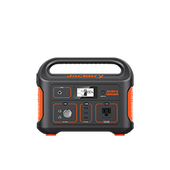
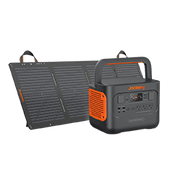
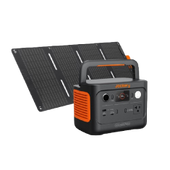







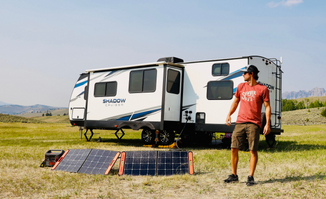












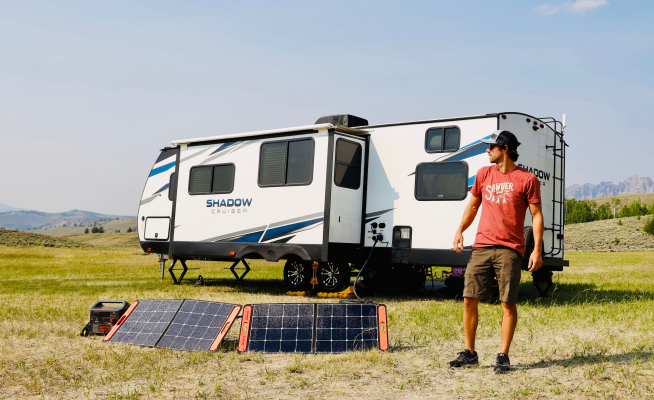

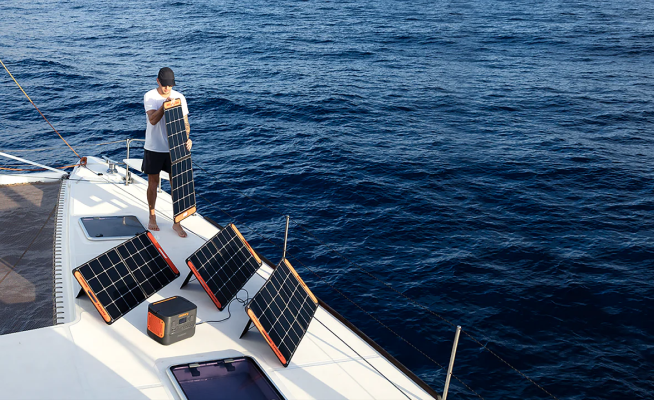
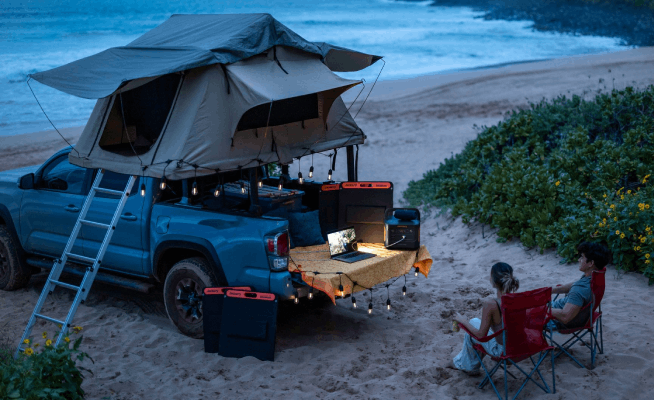
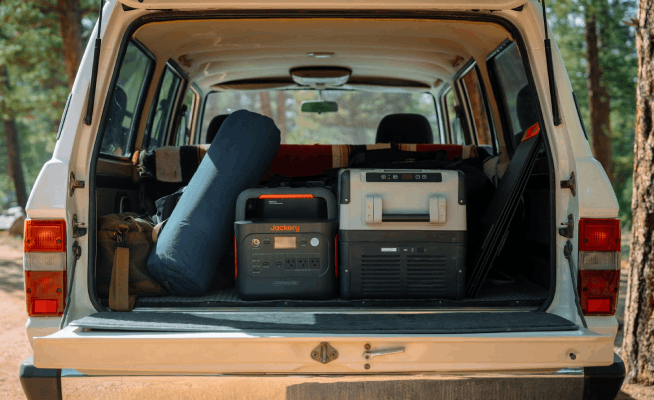

















Leave a comment